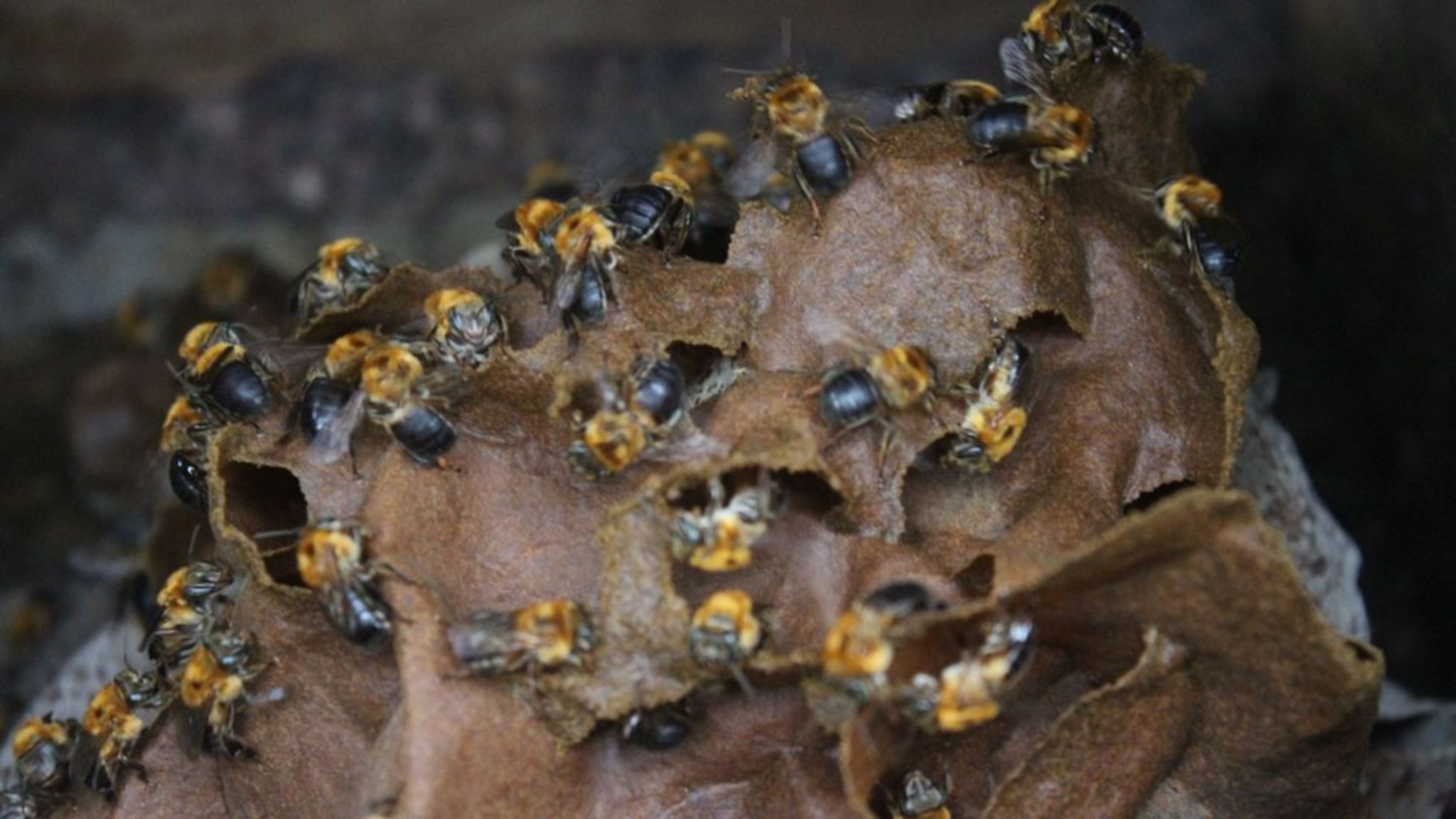“I want to know who tore down the chestnut tree. The rubber trees, who destroyed them? Whoever tore up and set fire to the palm trees made money, but polluted the world…” — João do Mel
Surrounded by soy at every side, the João do Mel farm, in Belterra, in western Pará, is an island of biodiversity that still reflects the Amazon nature in a surrounding setting made up of deforested areas as far as the eye can see. Despite ecological resistance, the little oasis belonging to João Batista Ferreira is already suffering the effects of the monoculture model associated with the large-scale use of pesticides.
That and other socio-environmental effects have been increasingly associated with the killing of bees and, consequently, the unviability of honey production as an economic activity in the town that comprises the Santarém Metropolitan Region (Lower Amazon Mesoregion), located 724 kilometers from Belém.
To view the full version of this story in Portuguese, click here.
“Quero saber quem derrubou a castanheira. As seringueiras, quem será que destruiu? Quem arrancou e tocou fogo nas palmeiras ganhou dinheiro, mas o mundo poluiu…” — João do Mel
Cercada de soja por todos os lados, a Chácara João do Mel, em Belterra, Oeste do Pará, é como uma ilha de biodiversidade que ainda reflete a natureza amazônica em um cenário formado por áreas desmatadas a perder de vista. Apesar da expressão de resistência ecológica, o pequeno óasis pertencente a João Batista Ferreira já sofre os efeitos do modelo de monocultura regada ao uso de agrotóxicos em larga escala.
Esse e outros impactos socioambientais têm sido cada vez mais associados ao extermínio de abelhas e, consequentemente, à inviabilidade da produção de mel como atividade econômica dessa cidade que integra a Região Metropolitana de Santarém (Mesorregião Baixo Amazonas), localizada a 724 quilômetros de Belém.
